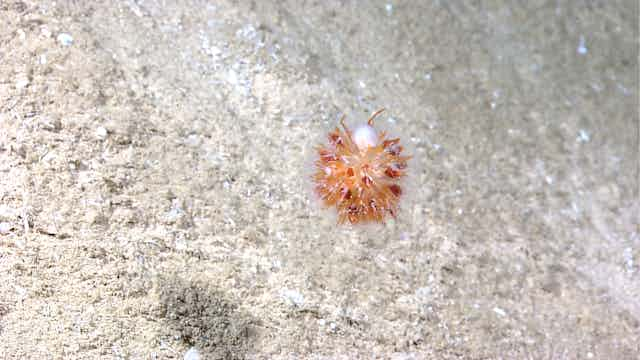I was 12 when I first came across an ocean dandelion. I wish I had known then how strange these animals truly are. I was watching a documentary where researchers had collected a deep-sea dandelion using a submersible, but upon returning to the surface, the dandelion had disintegrated into nothing but “petals”.
The announcer said: “We know almost nothing about the ocean dandelion. What it eats, how it reproduces, how it is put together.” Since watching this documentary, new species of ocean dandelions have been discovered, yet much of their biology remains poorly understood. But scientists do know something about how they are constructed, and when I found out, 16 years later, I was in for quite a shock.

A few years ago I started work in a lab studying a strange group of animals called siphonophores that includes the Portuguese man-of-war. Turns out the ocean dandelion is a siphonophore, and these siphonophores challenge a simple assumption about what it means to be an animal.
To explain that let’s look at human beings. You are one animal, but you are made of trillions of cells that work together. For biologists this description is that of “levels of organisation”. On one level, you are trillions of cells, on the second level, you are one unique animal. But ocean dandelions have a third level.

Imagine a single creature that is not just made up of trillions of cells, but also hundreds of animals. All these animals work together in the same way your cells work together, creating a kind of super organism. A colony of ants could be considered a super organism, all working together with one queen. Siphonophores, like the ocean dandelion, take this whole idea one step further. The ocean dandelion is like an ant colony on steroids.
Each ocean dandelion is a collection of individual animals, all working together for the colony, like different ants form a colony. There are different jobs for different members. Some protect the colony, some catch food, some reproduce. But there is one key difference between an ant colony and an ocean dandelion: individual ants work together, but still remain separated from one another, for members of the ocean dandelion colony, this isn’t true.
The many animals that make up the ocean dandelion actually share tissues with one another. They have one shared community stomach system, so what one animal eats, all get to digest. Colony members have some independence, and are capable of their own movements. However, a vast colony-wide nervous system also coordinates individual movements, so that many members can work collectively for a common goal.
Forget the hammer and sickle, communism, your symbol should be the ocean dandelion.

Each “petal” of the disintegrated ocean dandelion I saw years ago was actually a single member of the colony, able to survive a short time on its own before starving to death. A change in pressure, or bumpy ride to the ocean’s surface, may have been what caused the colony to collapse.
Despite the time that’s passed since I first saw the ocean dandelion, there is still a lot we don’t know. What does it eat? How does it reproduce? But we know something about how it’s put together, and I never would have guessed the answer would be so strange. Twelve-year-old me would be thrilled.

This is an edited version of an article that first appeared on Deep Sea News.

